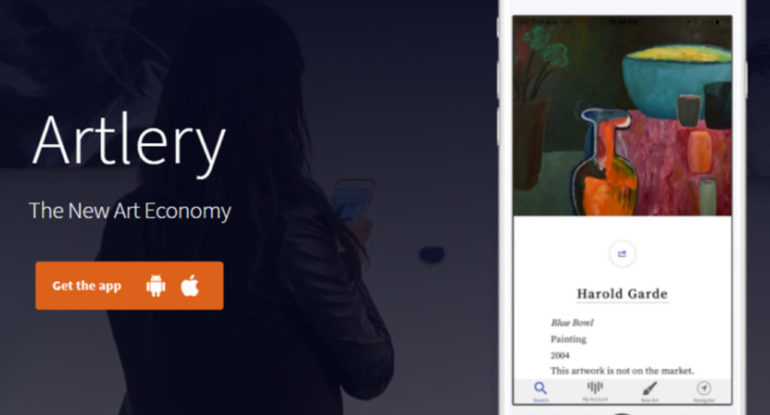Artlery For Art Lovers On Blockchain Platform

The traditional art market is notoriously exclusive and opaque. A relatively small number of artists and collectors represent an incredibly large percentage of the market, and there are very few, narrow, and sometimes circuitous paths for emerging artists to enter the art world. Even then, the openness and unregulated nature of the art market encourages experimenting with new concepts and new media, democratizing the art market on one hand, and democratizing capital markets on the other, with both hands on the transformative and disruptive power of the bitcoin blockchain.
Artlery – The New Art Economy on the Blockchain
Artlery describes itself as a network of artists who have agreed to share some of their earnings with patrons and peers who engage socially with their works. Artlery’s goal is to mint an art-as-asset-backed-currency on the blockchain by engaging art lovers as partial owners and stakeholders of the art with which they interact.
Its approach is to provide the right incentives for all sides of the market—artists, patrons, curators, and venues such as galleries, museums, studios, and fairs—rather than providing perverse incentives for a single party at the expense of the others.
To foster patronage and build a reputation for an artist, Artlery stages initial public offerings (IPOs) of digital pieces of that artist’s work. Artlery’s app enables artists such as JaZoN Frings, David Perea, Keith Hollander, Benton C Bainbridge, and the Bazaar Teens to replicate their physical works digitally, break them into many pieces like a picture puzzle, and apportion them to patrons based on each patron’s level of appreciation from within the Artlery app. During a work’s IPO period, patrons can accumulate interest up to the specified percentage of the piece that the artist initially gifted to the community. As the platform matures, Artlery plans to allow for the transfer and sale of the accumulated interests in the works.
Buying Art through the Bitcoin Blockchain: How It Works
To purchase the piece, Don (an imaginary character) opened his bitcoin wallet app. He used it to create a message that specified the amount of bitcoin representing the purchase price of the piece, designated Artlery’s public key as the recipient of that bitcoin, and used his private key to “sign” or authenticate the message. Don double-checked all the fields because, unlike traditional payment methods, there is no reversing of bitcoin transaction. Then he broadcasted the message to the entire network of computers (nodes) running the full bitcoin blockchain.
Not all nodes are doing the work of mining. In fact, the vast majority of nodes on the bitcoin network are simply performing bitcoin rule verification of the received data before routing the data to peer connections. The network verifies the two bits of data—that Don used to control the amount of bitcoin specified and authorized the transaction—and recognized Don’s message as a transaction. The miners then race to convert unordered and unrecorded transactions into transactions ordered and recorded in a block of data.
The winning miner receives a set quantity of new bitcoins as a reward—the software itself mints and allocates the new coins—and the hashed block is appended to the chain. So, within ten minutes of Don broadcasting his message, he and Artlery received a confirmation that Don’s bitcoin transaction created referred as “unspent transaction output,” meaning that Artlery can spend it by doing what Don just did—broadcasting a message that specifies the amount to send and the address of the recipient, and authorizing the transaction with Artlery’s public key. If the artist and the patrons knew both Don’s and Artlery’s public keys, then they could see that the deal between them went through and could see the amount of the transaction. Every subsequent block served as further confirmation of their transaction.
Artlery utilizes the bitcoin blockchain in several ways. First, it registers the provenance of the art as metadata on the blockchain through a partnership and API integration with another bitcoin start-up, Ascribe.io, and it uploads the payout table so that all stakeholders are paid immediately according to their asset shares with immediate transparency for all parties. It is exploring various techniques for encoding this information, such as a bitcoin script inside transactions. While its initial target market is fine art, Artlery has significant traction in other copyright industries such as music, books, and movies, which it will target through the release of its own API.
Add a comment
You must be logged in to post a comment.




























































